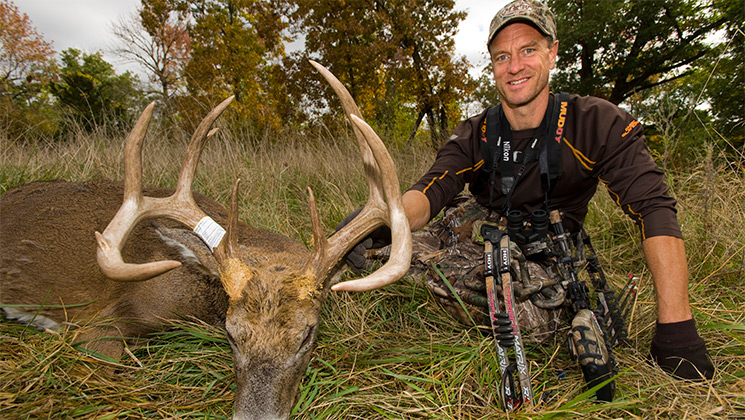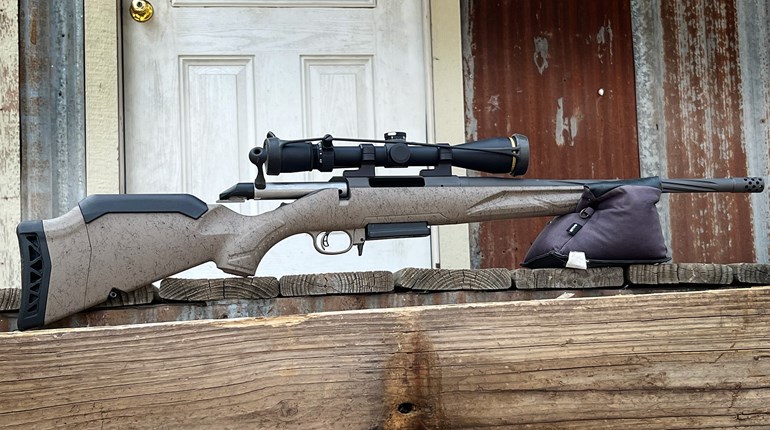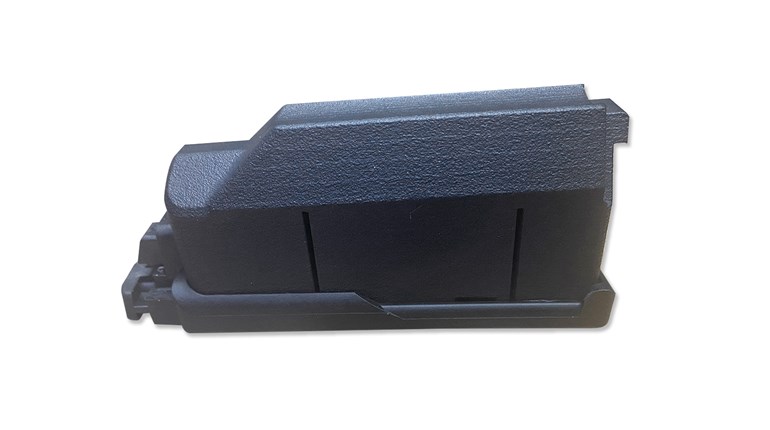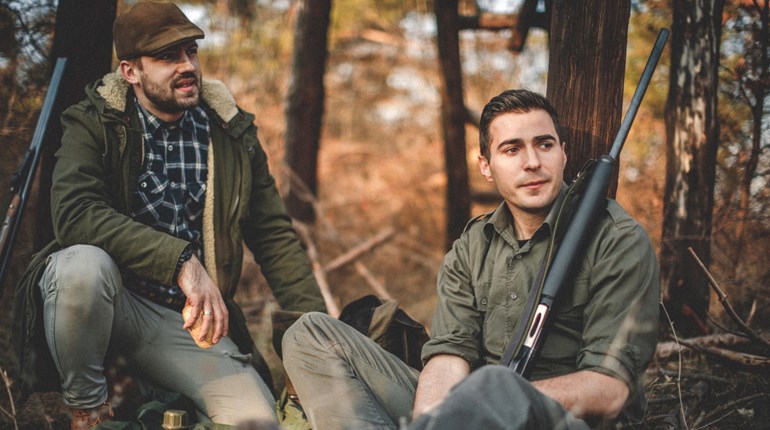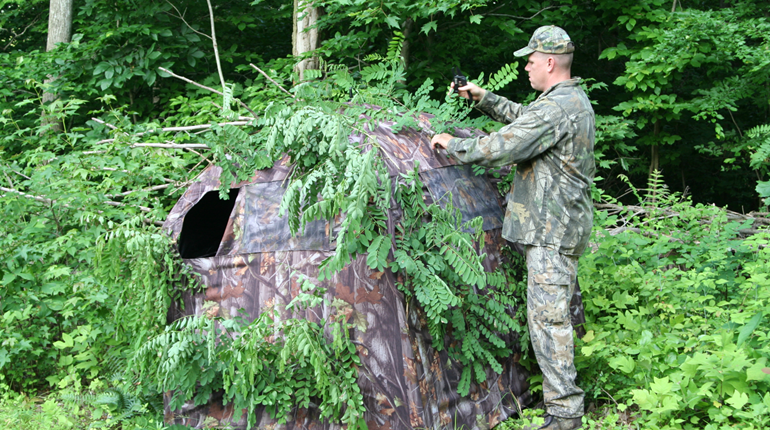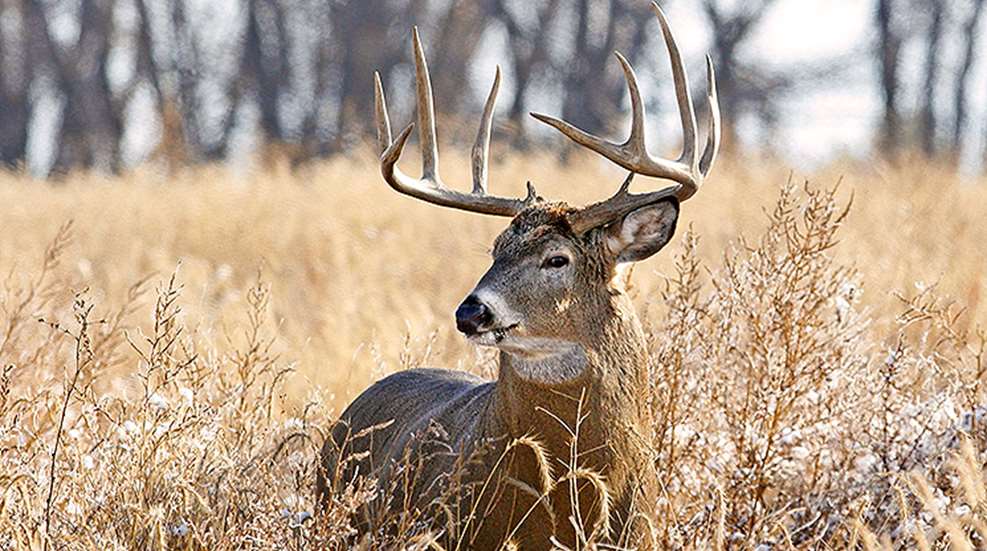
October is a great month to be outdoors. Everything feels good and smells good. The seasons are open and life for the hunter is full of promise. The only thing October gives up to November is the rut. Fortunately, there are times when you can bridge even that deficit—when October becomes at least as good as November. Those are October’s glory days. Let me show you the formula.
When putting together a season plan, we can spend long hours considering all kinds of things, like phase of the rut, changing food sources and moon charts. You name it, we’ll try it. But the true key that unlocks October’s glory is the temperature. The passing of October cold fronts is the simple cue you can count on to make the magic happen.
Last season produced the best October whitetail hunting I have ever seen. I had some great encounters, and my friends shot multiple mature bucks during a month that is known better for its lull than for its bounty. The reason is simple: A cold front accompanied every weekend of October last year. Everyone was hunting cold fronts without even realizing it.
Typical October
In general, October can be slow for deer hunters. I am sure you have heard of the October lull. This event can certainly be a reality, and some years it seems to take up the full 31 days of the month. From studying trail-camera photos of the bucks I hunt, I can tell there is definitely a drop-off in daylight activity once the calendar flips over to October.
There could be more reasons for this decline where you hunt, but on my farm it is totally dependent on the deer. It is not caused by hunting pressure, because I am the only one hunting most of the season. Yet even if I haven’t set foot in their area with a bow in hand, the deer still become nocturnal in late September. They are wired that way. In early September, they would be very killable—even up to mid-September. But once we get into late September and October, their daylight activity levels drop off the table.
Even in a normal month, some bucks will be killable. Bucks are individuals; not all of them act the same in October. I have run a trail camera on all parts of our farm now for the past eight seasons, and it is interesting to find that a very few mature bucks do have a tendency to move in daylight in October. It is impossible to anticipate ahead of time which ones will exhibit this behavior. One year a buck can be reclusive, only moving at night, and the next season he can be a daylight mover all through the season.
I believe it has to do with age. Middle-aged bucks seem to be the hardest to kill, but once they get past that stage they tend to become easier to kill. I have had bucks that went from being ghosts one season to being the first ones to come out in the fields the next season.
My point here is you need to monitor your bucks as much as possible, looking for those that move in daylight. Those are the killable ones and the ones worth hunting. Again, however, coming back to the October lull, most (if not all) of the bucks you really want to shoot will be nocturnal.
So, while your camera scouting may turn up a potential customer or two, it likely won’t, and you will be left to decide what to do with 31 days of awesome beauty and 10 months’ worth of anticipation. You can’t just sit it out waiting, can you?
Be Patient to Master the Month
We could just go hunting and hope we don’t wreck our best spots. I think a lot of people do this every year (I used to do it). I hunted as often as possible, in the best spots I knew of, and hoped to get lucky. It can happen. Some people do kill nice bucks in October, after all. You just need to be out there as much as possible, right?
The most likely outcome of this plan is that we will alert the deer we are hunting. The more we hunt, the more the deer realize we are sneaking around (they are very good at figuring this out) and the less likely they are to move in daylight, or possibly even to stay in that area. Though tempting, hunting your best stands without a green light is not a productive path.
Skipping October altogether was my knee-jerk reaction when I realized that hunting my best stands during the month was hurting my chances in November. I just waited until November to start deer hunting. This approach keeps the deer from being educated until the bucks are more likely to be on the move. You can’t screw up your spots if you aren’t hunting them.
Surprisingly, this is not a terrible strategy. However, skipping October is not a good option for most people. Not everyone has the option of hunting other game in other areas. We really love to bowhunt and we have been waiting all year to get back out there. It is a beautiful time to be in the woods. So even though it works, I don’t like skipping October.
Obviously, the best strategy for October is to pick your punches.
As mentioned, the goal is to find those bucks that are still moving in daylight and target them immediately. There is only one way I have found to do this effectively and that is with the use of trail cameras. I move mine around a lot in October until I find a nice buck moving in daylight. As soon as I find that, I wait until the wind is right and then hunt him.
Every season, it seems I have at least one buck like this in my hunting area. The pattern may not last for more than a week, but these bucks do exist, and I have killed a few of them.
Hunt the Cold Fronts No Matter What
Okay, I have finally worked my way around to the meat of this article. You may not have found a buck you want to shoot that is moving in daylight, but all is not lost. Just focus on hunting cold fronts. If a buck is going to break his nocturnal pattern for a day or two in October, it will be when a cold front passes through and the day after it.
You can’t wait to see this on your trail cameras before reacting to it because by then it is too late. If you aren’t hunting when the front passes, you are likely to come back and check your trail camera and see that your target buck was out checking scrapes or feeding an hour before dark. You need to have faith that the bucks will move, and get out there and hunt.
These cold fronts are the real paydays in October. The best fronts come through the last week of October. They are like switches that turn on the buck movement. But I have also seen years when the bucks moved very well even in early October when the fronts were passing.
You can be really aggressive around these cold fronts. Plan to hunt any buck you have been watching on trail cameras. Go into your best spots. This is a short window. Don’t overplay it, but at the same time don’t be too conservative. By their very nature, these fronts will bring northwest winds, so be sure that you have at least one good northwest-wind stand in each part of your hunting area.
Which Days?
As mentioned, the best days to hunt include the day the front passes through and the day after it passes. The actual time when the cold front goes through can be rough: it’s sometimes windy, sometimes rainy, possibly even a blizzard. (I once hunted a wicked blizzard in October, so don’t laugh.)
If it is raining, it can be a tough time to sit in a stand. The deer won’t move much until it stops. But you need to be there anyway because, literally, as soon as the precipitation does stop (within minutes), and especially if it starts to clear up, the deer will be everywhere. That is a major switch for maximum deer movement.
The hours of clearing that come at the tail end of a passing October front are serious prime time, some of the best hunting of the season.
So don’t avoid the day when the front is passing because you will miss what follows on the back side of that. You will see a ton of deer, even if it is just the last hour of daylight. You may have to sit through some crappy weather to be there during that magic hour, but it is worth it.
Where to Hunt
The stand you hunt doesn’t have to be anything sophisticated. The buck likely will keep doing in daylight what he was doing in the dark before the cold front came through. If you have a rough idea where the buck is bedding and where he is feeding, you can just hunt anywhere in between during a morning hunt. In the evenings, favor the endpoint closer to where he is feeding.
You can even guess at these endpoints if you aren’t sure. If in doubt, hunt the closest good feeding area in the evening and skip the morning hunt. My only word of caution: Stay away from his suspected bedding area. Hunting there can be a bit too intrusive unless you really know what you are doing.
Risk vs. Reward
There are many decisions to make in October—the main one being whether to even hunt—so I put together a simple plan to help you make that decision.
Bowhunting is all about playing the balance between risk and reward. Every time you hunt an area, you risk educating the deer that live there. You don’t want to take risks when the potential reward (seeing the buck in daylight) is low.
You should always look for times when the potential reward is great enough (when the odds are at least sort of on your side) to make it worth the risk of educating a mature buck by going after him. The reward is high enough during the best days of the rut (we all know this), but in October you have to be more careful. The tradeoff is much more real.
There are only three times when it makes sense to be aggressive this month.The first is when you are hunting an area you don’t plan to hunt later in the season and don’t really care what you shoot. The risk doesn’t matter then.
The second time is when you have a buck on a consistent daylight pattern. Get after him as soon as it makes sense. This is a gift in October so don’t waste it.
The final time is when there is a cold front coming through. Hunt the day the front comes through and at least the next one, possibly even longer if it stays cold.
Work hard to find those cooperative bucks and then stay disciplined. Don’t hunt them until the time is right, and you’ll discover October does offer some good opportunities.
